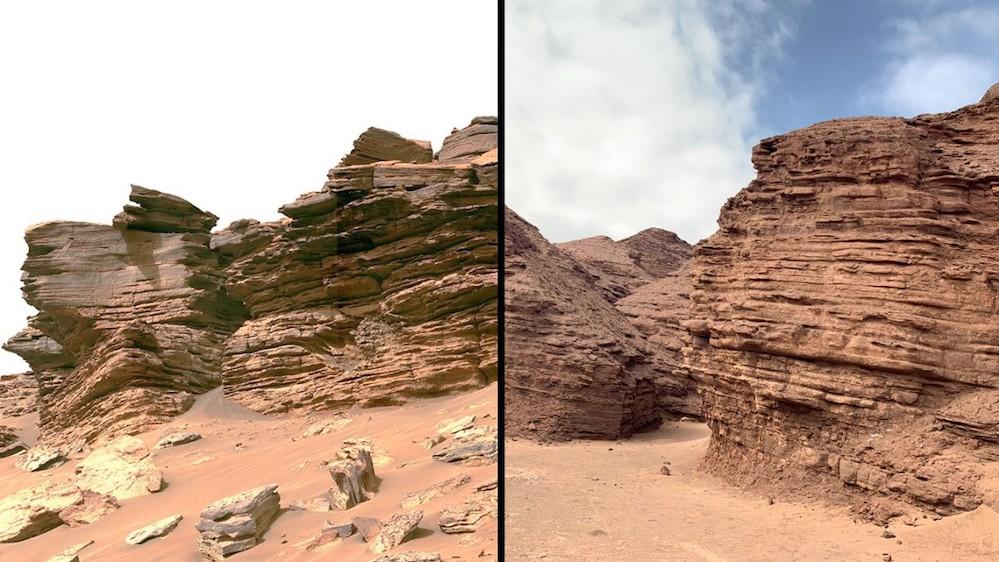Current state-of-the-art instrumentation being sent to Mars to collect and analyze evidence of ancient life on the red planet may not be sensitive enough to make accurate assessments, according to an international research team co-led by a Cornell astrobiologist.
In a paper published Feb. 21 in Nature Communications, senior author Alberto G. Fairén, a visiting scientist in the Department of Astronomy, in the College of Arts and Sciences, and a multi-institution team claim that any organic material in Martian rocks could be difficult, if not impossible, to detect with current instruments and techniques.
Fairén – also a research professor at the Center of Astrobiology (CAB) in Madrid – and the team have conducted tests on sedimentary rocks found in the Red Stone Jurassic fossil delta of the Atacama Desert in northwestern Chile, the oldest and driest desert on Earth and the makeup of which makes it a popular geological analog to Mars.
For this work, the researchers conducted geological tests at Red Stone using four instruments that are currently or will soon be on Mars.
They found that Red Stone samples display numerous microorganisms of undetermined classification – what the researchers term “dark microbiome” – and a mix of biosignatures from current and ancient microorganisms that can be barely detected with state-of-the-art laboratory equipment.
This revealed to the researchers that the instrumentation sent to Mars might not be sensitive enough, depending on the instrument used and the organic compound being sought. Specifically, “the chance of obtaining false negatives in the search for life on Mars highlights the need for more powerful tools,” said the paper’s lead author, Armando Azua-Bustos, a research scientist on Fairén’s team at CAB.
Either putting complex instrumentation on Mars, approximately 53 million miles away, or bringing Martian samples to Earth is necessary in order “to conclusively address whether life ever existed on Mars,” the researchers wrote. Both options are extremely difficult, Fairén said.
“You need to decide whether is more advantageous having limited capability for analysis on the surface of Mars to interrogate a wide variety of samples,” he said, “or having limited samples to be analyzed with the wide variety of state-of-the-art instrumentation on Earth.”
NASA is currently partnering with the European Space Agency and others in an effort to safely return to Earth Martian geological samples, gathered by the Perseverance rover. And Fairén said the first European Mars rover, named Rosalind Franklin, is expected to launch as early as 2028.
This European rover “will carry a drill with the unprecedented capability of reaching down to a depth of 2 meters (6 ½ feet) to analyze sediments better protected against the harsh conditions on the Martian surface,” he said. “If biosignatures are better preserved at depth, which we expect, there will be more abundance and diversity, and better preservation of biosignatures, in those deep samples. Our instruments in the rover will therefore have more chances to detect them.”
Researchers from institutions in Spain, Chile, Italy, France and Japan contributed to this investigation, as did scientists from Los Alamos National Laboratory in New Mexico, Georgetown University and NASA’s Goddard Space Flight Center and Johnson Space Center.
Among the funders of this work were the European Research Council and the Human Frontiers Science Program.





